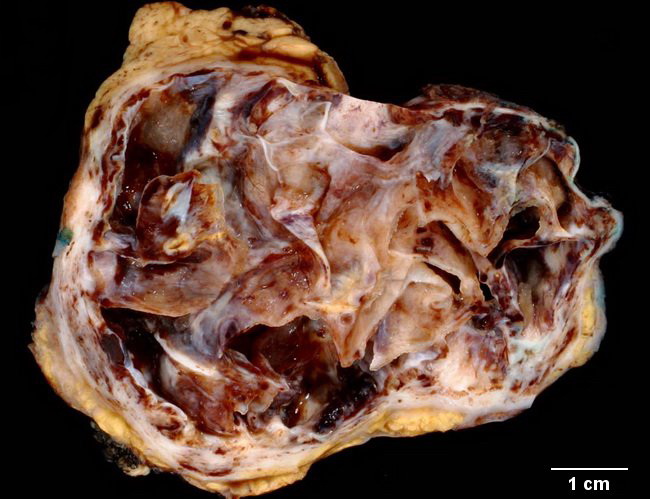Mucinous Cystic Neoplasm : Intro & Gross


Comments:
Introduction: Mucinous cystic neoplasm (MCN) of the pancreas is a multilocular cystic epithelial neoplasm that is seen predominantly in middle-aged women. It almost always arises in the distal pancreas and does not communicate with the pancreatic duct system. The cyst wall is lined by mucin-producing columnar cells and has a distinctive ovarian-type stroma. It has been previously called mucinous cystadenoma. It accounts for about 8% of resected cystic lesions of the pancreas and about 1% of all pancreatic tumors. Most are benign with a 5-yr survival rate of 100%. In the presence of invasive cancer (12% of cases), the survival rate drops to 55-60%. Gross Pathology: Vast majority (80%) of MCNs arise in the body or tail of the pancreas. They appear as solitary, large, mutilocular (rarely unilocular) cystic mass with thick septations and a fibrous capsule that may contain calcifications. The mean size is 6 cm (range 2 to 35 cm) for benign and 9 cm for those with invasive component. Some of the locules are filled with translucent viscous mucin, whereas others contain admixture of mucin with hemorrhagic/necrotic material. The inner lining is smooth in most cases. Mural nodules or papillary excrescences are seen in MCNs with high-grade dysplasia.



